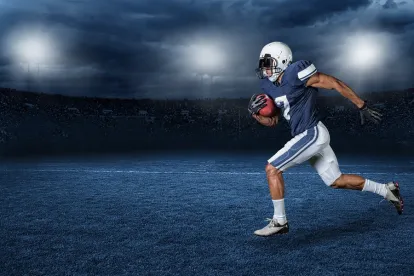In a league well known for the copycat tendencies among its franchises, the Cleveland Browns may have set a new National Football League (NFL) standard for evaluating and completing trades.
After flirting with a 0-16 season in 2016, the Browns entered the offseason with a record $100+ million in cap space. The NFL’s mandatory salary floor requirement would have forced the Browns to spend at least 89% of that amount on players’ salaries. The team’s unmatched spending power placed them in position to leverage their financial flexibility to potentially sign multiple free agent players to help reinvent the franchise.
In sharp contrast, while the Houston Texans finished the 2016 season with a 9-7 record, winning the AFC South before losing in the playoffs to the eventual Super Bowl champion New England Patriots, the team entered the offseason with the seventh smallest cap space to sign players, only about $25 million. Numerous NFL pundits suggested that the remaining three years of quarterback Brock Osweiler’s (Osweiler) four-year $72 million contract would be an albatross that would hinder the Texans’ ability to improve and move forward as a Super Bowl contender.
The immediate needs of both teams created the perfect opportunity for the type of trade that is frequently seen within the salaried cap structure of the National Basketball Association (NBA), but never before completed between teams in the NFL.
The Browns and Texans combined on a trade that sent the Browns fourth-round draft pick in 2017 to the Texans in exchange for their second-round draft pick in 2018, a sixth-round draft pick in 2017, and Osweiler and his contract. Suddenly, the Browns ability to add draft pick assets showed other franchises in the NFL that the Browns valued the cost of the combined draft picks, especially the second-round draft pick in 2018, at or above $16 million — the ultimate salary cap impact for Osweiler’s 2017 contract.
By acquiring Osweiler and a pair of draft picks, the Browns may have manipulated their cap space to acquire valuable draft pick assets that they view as more valuable than any free agent player they would have secured with the same $16 million.
Ultimately, the Browns were willing to absorb Osweiler’s contract in order to get the Texans’ second-round pick in 2018 and a sixth round pick in 2017.
While Cleveland will owe Osweiler $16 million in 2017, it can part ways with the him after next season with no penalty and his acquisition helps the team get closer to the mandated salary cap floor without having to enter into a risky long-term deal with a free agent player that could have easily exceeded $16 million in salary guarantees.
From the Texans’ perspective, the removal of Osweiler saves them $16 million in cash and provides $10 million cap space for the 2017 season and prevents future cap issues that would have remained as a result of Osweiler’s contract after the 2017 season.
The trade has been lauded as a creative win-win for both teams.
Browns’ senior executive officers Sashi Brown and Paul DePodesta have received substantial credit for the deal. DePodesta is renowned for his creation and application of the “Moneyball” analytic model during his time with Major League Baseball’s (MLB) Oakland Athletics. Despite being limited by one of the smallest payrolls in MLB, DePodesta helped the Athletics remain consistently competitive within MLB’s uncapped salary structure by using an analytic approach to exploit market inefficiencies to sign the best available players.
The deal’s novelty has not been universally celebrated.
Some have compared the trade to NBA “salary dumps,” in which teams absorb large contracts for draft pick compensation. Hall of Fame General Manager Bill Polian called the trade “a joke.” “Houston did a good job. They made a mistake and got out from under it…,” he said, “But the idea of paying $17 million for a second-round pick, to me, is ludicrous.”
Will other teams make similar moves in the future? Only time and the ultimate desire of each NFL franchise to win a Super Bowl will tell.




 />i
/>i

